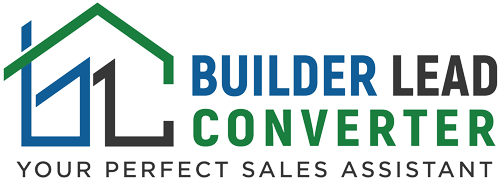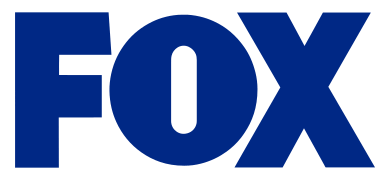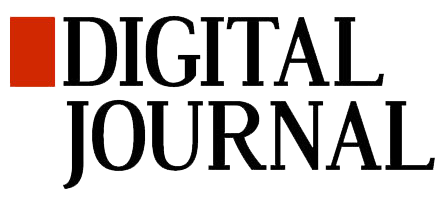The challenge for remodelers and home builders remains the same- supply chain disruptions and labor shortages.
Production cycles aren’t getting any shorter making it nearly impossible to sell more projects and homes. The question facing every builder is…
How does a remodeler or home builder grow sales revenue doing the same or fewer units?
In the last episode of our new series called How to Grow Sales Revenue, we talked about the challenge of limited trade partners and staffing. This week, we’re going to tackle supply chain disruptions and material shortages. The supply chain can lead a company down an unfortunate path, where it can slow revenue growth.
The solution? Change your sales & design process to backlog more leads with longer completion timelines.
In this episode as we discuss:
- How to set client expectations for a LONG road- at the very first call
- Why you must target “Ready & Ready-Willing Leads” over the “Ready, Willing, and Able Leads (RWA)”
- Why you should add a commitment step (and a suggestion of what it should be) to your lead and design backlog
So what are you waiting for? Watch/Listen and learn how this episode below could help your business grow and your revenue faster than ever before.
Builder Lead Lead Converter helps home builders & remodelers grow sales revenue and margins while navigating supply chain and labor market issues. Get started today by scheduling your free strategy call at https://www.builderleadconverter.com/
Transcript:
Today on Conversations that Convert. We’re gonna talk about how to grow sales revenue with supply chain challenges. Let’s get started.
Welcome to conversations that convert every week, we’ll spend about 10 to 15 minutes tackling relevant lead generation marketing and sales topics for remodelers, home improvement companies, and home builders. Conversations that Convert is brought to you by builder lead converter, your perfect sales assistant.
And now here’s Rick and Daiana.
Rick: Daiana, how are you today?
Daiana: Hello? I’m very good. Thank you. Better and better in you?
Rick: Very good. Very good. I see. We both have news. Virtual backgrounds. I mean, this is pretty exciting. You’re in some beautiful home. Looks like you just got done playing the piano. I just got done. It looks like waking up to a sunrise over Lake Superior on a cold January morning with that sea smoke behind me. So, yeah, this is great. You don’t have to look at our messy offices anymore. Yes.
Rick: So when you remodel your home, you, you like to dream.
Daiana: That’s right. I love what you’ve done at the place, for sure. Yes. Thank you. It was hard work.
Rick: So, so what, what are we talking about today?
Daiana: Today is episode 28, and we will talk about how to grow sales revenue with supply chain challenges. So that’s very interesting topics with, I assume, nice counterintuitive challenges.
Rick: Well, it is, of course, the topic of the day been the topic of the year and it looks like it’s gonna continue to be the topic for the foreseeable future. Never before have we seen so much demand and had such a challenge at actually producing our products, which are new homes and, and remodeling projects. So it, it, it leads us into lots of different challenges. This is all part of our, how-to maximize your revenue per sale series, which we started last week. So let, let’s just break down that, that problem, shall we?
Daiana: Yes. I’m, I’m curious. What’s the main problem here?
Rick: So we have a supply chain shortages that adds the amount of time to complete projects, adds the amount of time, you know, or maybe limits the amount of selections we can get, because some of them just aren’t available or the timeline takes too long to get them. And it really makes it impossible to grow sales revenue by increasing your number of sales. Historically, that’s how we always have grown our businesses. We just sell. And, and, and we grow that way. And so now we’re stuck because we don’t have the ability to sell more. So we have to be able to grow our businesses with the same, or perhaps less sales than we did the year before.
Daiana: So when there is a problem, there is always a question. So what’s the question here?
Rick: Yeah. So, the main question here is, is like, you know, how are we gonna do this? How do we grow? How do we not stagnate, and, and grow our revenue, our profit margins, doing the same or, or less units? So one of the things I heard from one of my clients years ago was he goes, you know, there’s always these guys out there and they wanted to produce the big numbers and he goes, but I’d rather make more profit. And more revenue from and do less units from each job any day, of the, of the year versus trying to just do more units, cuz that with more units comes headaches. So it’s a, it’s a nice problem to have, it again, but there are challenges.
Daiana: Yeah, so we have a problem-questions. And when there is a question, there is always an answer. So…
Rick: Yeah. So, exactly the answer today is we wanna change your sales and design process, and we wanna backlog more leads with longer completion times. Now you already mentioned it a little bit, but we’re gonna get really counterintuitive today. Everything that we’ve thought about this business, we’re gonna flip it on its head and do the opposite.
Daiana: So let’s go ahead and get started. And I know we have four ideas and what’s the first one?
Rick: Yeah. So let’s set, well, let’s set the stage here, then we’ll get into those four ideas. So, the idea is this, is that in the, historically in the past we get a lead. The first thing we do is we say, well, how soon you, you know, do you wanna get started? When do you wanna get started? Cause we’re trying to identify, you know, is this a, is this a lead we wanna work with? And if somebody said, oh, we’re no hurry. You know, we’re one or two years out, we’ve been sort of like. Next. And we go to somebody that wants to go right away, cuz those are the exciting ones we wanna, you know, get ’em ready into production and get paid. So we wanna flip our thinking from when do you wanna get started? We wanna flip it to how soon you wanna be enjoying your new home or project. And so we wanna focus on the end. So beginning with the, with the end in, in mind. So this is taking a longer horizon, a longer timeline because we really can’t start projects right away.
Daiana: All right. So now we arrive at the first idea.
Rick: Yeah. So that ready? Willing, enable. Okay. So let’s go back to the old sales acronym here. I’m looking for a ready, will enable lead somebody that’s gonna buy right now. And what we’re changing at now is, is that we wanna stop targeting those people. If somebody calls me up on the phone right now and says, Hey, I wanna do this project. I wanna build this home. We wanna get started right away. Finances in place. What we’re finding is that these people. First of all, they’re not realistic with what stuff costs. You know, they’re, they’re, they’re, they think that because they’re ready to go right now, they’re a hot commodity and they typically are really going to be price sensitive. But the second thing we have is that their expectations on their timeline on how long it’s gonna take to get that done are really outta whack. So what happens is, is that, we, it leads to cancellations. It leads to unhappy clients that make your life miserable. So these folks are not that desirable right now. If somebody is not willing to delay, starting to delay, or enjoying their project for a year or more, they’re probably not a good candidate right now. And that’s the type of person you wanna say no to.
Daiana: And, and that’s contrary to an intuitive idea.
Rick: Completely counterintuitive, right? Yeah. It’s, I’m a buyer. Here’s my money. I’m ready to go. And you’re gonna say, sorry, we can’t help you, completely counterintuitive. Now, someday we hope to get back to being able, to work with people like that. But for right, no it’s not realistic.
Daiana: And it’s, it’s very hard to apply. I assume.
Rick: It’s impossible. Because literally, it’s like, I, I cannot get you started right now. And, again, somebody wants to go right now. If you ask them to wait six plus months in order to get started, you’re, you’re just gonna have a lot of, a lot of bad. There’s just gonna be a lot of hard feelings. Yeah. Like I said, unreal expectations. Prices are gonna go up dramatically from where they’re at right now until six months from now. And those folks are gonna, they’re just not gonna be a good, a good project for you. So you’re gonna wanna pass on them four right now.
Daiana: That makes sense. And what’s the next idea?
Rick: Yeah. So we wanna go back instead of targeting, ready will, and enable leads. We wanna target leads that are ready or ready and, and willing. So these folks think that, hey, if I wanna have something done a year from now, that’s a long time away, but you’re thinking that’s perfect. Because I’ve got a backlog, then I’ve gotta get your design engineering selections done. I gotta get you completed. I, I can, I have time to actually deal with the supply chain. So these people are, are, are perfect. Perfect timeline. So we wanna again, change our philosophy if we’re looking for that person that is, you know, right now, maybe looking at end of 22. Into 23. I have one client I talked to right now, you know, they’re, they’re, he’s booked out a year, so anyone he’s talking to it’s like, Hey, look, if you’re not thinking that you, you know, we can start your project in, in 2022, that’s probably not gonna happen. Now, we can go through the planning, design, and selections. We can, you know, we can get all that done in 22, which is wonderful. And then we’ll start your project in 23 and get it completed in 20.
Daiana: It’s a very good idea. And, and what’s the next one?
Rick: Yeah. So the next one is we have to add a commitment step. We don’t wanna write contracts before, probably 60 days before we start, for two reasons. Number one, psychologically, number two, just because of pricing volatility. Once somebody actually signs a data line, write, you know, signs that contract they’re completely 100% emotionally invested and they want to get going now. So to ask that person to sit in on their hands for six months or more is not a good idea. So we wanna avoid writing that contract and in turn, we wanna add another commitment step. So think of it this way. If you’re a home builder, you start off with a lot of reservations. If you do custom design, maybe you add then ask for a custom design, and then historically you’ve gone to a purchase agreement or a contract. Now what we’re gonna do is we’re gonna go from design to say something like a letter of intent. In the letter of intent, it can ideally its non-refundable money where that person, you know, has a design done. You’ve been able to give them a budget. That’s not firm because obviously, you can’t price anything because you’re too far from starting. You give them a budget and then they’ll put down additional money and that additional money is gonna be used to hold a slot in your production process. And that’s something we’ll start talking about next month is slot selling and how you, you need to be using that here this year with the demands that we have, on our production, production departments. So I, in that commitment step, keep them in the loop, but they’re not expecting firm pricing yet because you don’t have a contract. So that allows you buy you time to finish selections, finish engineering, finish design, it’s finished engineering, finished design, go ahead and get everything priced. And then you don’t have to give them a firm price until 60 days or less from the time of starting.
Daiana: That’s a very, sounds like a very practical idea and is a very smart one. So yeah.
Rick: You know, I always used to say, you want, how do I get somebody off the street? You know, is like once they come in and, and, and they’re interested in what I have to offer, I wanna take ’em off the street. So they’re not talking to my competitors. So you look for small commitment steps. In order to do your due diligence to get ’em to the contract. So this is just adding another commitment step, which is still counterintuitive because if someone’s really a no wider contract, you know, historically we’ve always said, okay, stop selling and write the contract, you know, get ’em while, while they’re hot. And so now essentially what we’re doing is we are flipping the script and we’re saying, I’m sorry, Mr. And Mrs. Prospect, we, we’re not gonna write a contract yet, but what we can do is we can put you into a letter of commitment and this is what you’re gonna get from it. And this is what’s required of you. And this is what we’ll provide for you for making that commitment.
Daiana: Very smart, very smart.
Rick: Yeah, number, number four is we wanna throw away the catalog. And we talked about this a little bit last time, but we wanna limit selections to manufacturers with availability. And I, I, I know, especially for custom builders and design-builder, remodelers, this has been something like, Hey, the whole reason I am custom is so I can do anything. And I understand you wanna keep that mentality, but there are some times when you just need to. Throw away the catalog. You’ll have to guide them into selecting certain products, and working with certain manufacturers and vendors where you can get materials. And just remove, unfortunately, some of that custom customization that you’ve, that you love to do for at least a time being, it’s something that, your, your clients will appreciate from you because then at least you can somewhat keep them on schedule. Try to keep the surprises to a when you run into a supply chain, snag. So limiting selections while on the outside, it looks like, oh, it’s a negative. It actually is a big positive for both you and your client.
Daiana: That’s a very good one. Okay. So we have the fourth. And now what’s next? How can you…
Rick: Yeah, so, so, and just a reference of, from, from what we talked about last time we talked about this building a tribe, you know, two questions to be asking yourself is what do you wanna be known for? And what types of projects should your clients refer to you? You know, so we are in an environment where doing less is more cutting out locations, cutting out types of products or projects that you, that you produce that are said not, the revenue you wanna produce, or they are not giving you the profit margins that you wanna hit. Just cut, cut those out. And so think of this, you know, some people use the word branding. We’re too small. The brand, none of us are ever gonna create a brand like a Nike or a Coca-Cola or anything like that. But what we can do is we can’t build a tribe. So a tribe is simply here’s my group of clients and people that are in my sphere of influence. How do, how, how do I want them to think of me as far as the type of builder? I am the type of project that, that, that I complete.
Daiana: It’s a, it’s very well said. So tribe versus branding, because we all want to build our brand and they, you, you hear a lot about personal branding, and I think it’s very well said. It’s, it’s more like a tribe, but…
Rick: It, it is. I and I’ve heard you hear a lot of marketing people come up and they talk about branding because they read a book about branding, you know. It’s like unless you’re an advertising agency and you have corporate clients that are spending hundreds of millions of dollars a year on quote-unquote branding. You’re not gonna brand yourself. You never are. But what you can do is you can’t have a, a, a tribe is typically a thousand people. So a thousand people, people have done business with you that are aware of your company, or perhaps interested in your services. That’s what a tribe is. And that’s who you’re really gonna market to.
Daiana: Makes sense.
Rick: Yeah. So Daiana, you know, the good, the good news is today is that after the first of the year, even with all this COVID craziness right now, is that we’re seeing really good results with reaching out to past clients and getting people booked up people that have been cold for a year or, or more. So today, what you can do right now is you can schedule your strategy, call me, find out if you qualify, and for us to book you up to 20 qualified lead appointments. Zero cost to you. No ad spend nothing. We will book 20 appointments for you to show you what we can do, for your business. All you gotta do is, is click that link right below this video here and schedule your call. And, we’ll see if you qualify.
Daiana: 20 qualified lead appointments. It’s a good deal.
Rick: It’s a good deal. You can’t go wrong right? For $0. So what are we talking about next week?
Daiana: Next week, how to grow sales revenue without paid ads. And…
Rick: I love it. One of my favorite topics is not advertising and building your business. So for everyone that joins today. Thank you so much. Thank you for your comments, and your likes. I hope you got something out of this video for my brothers and sisters in Christ may the grace of the Lord Jesus Christ. The love of God and the fellowship of the holy spirit. Be with you all. We will see you next Thursday. Bye-bye.
Daiana: Thank you. Bye.





